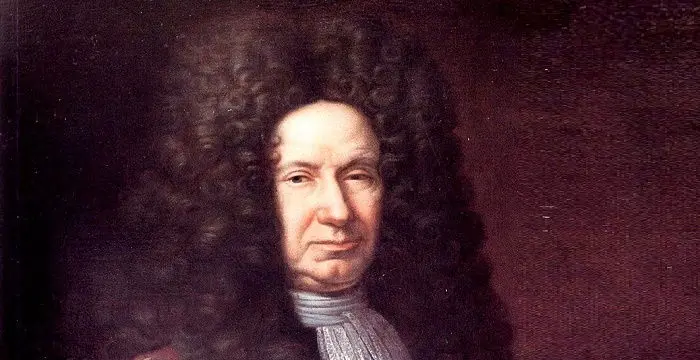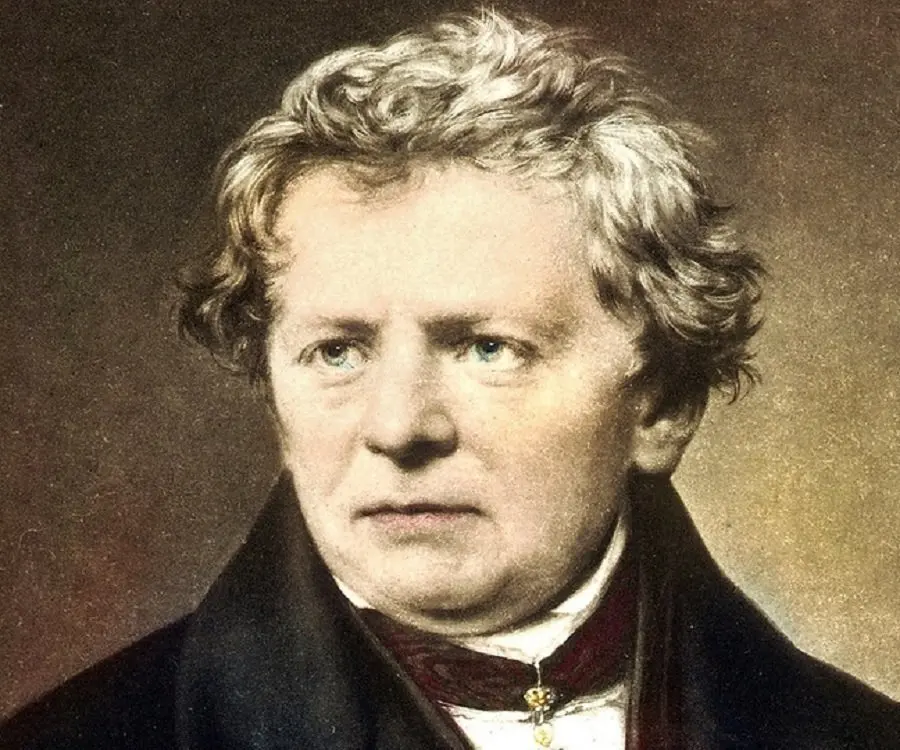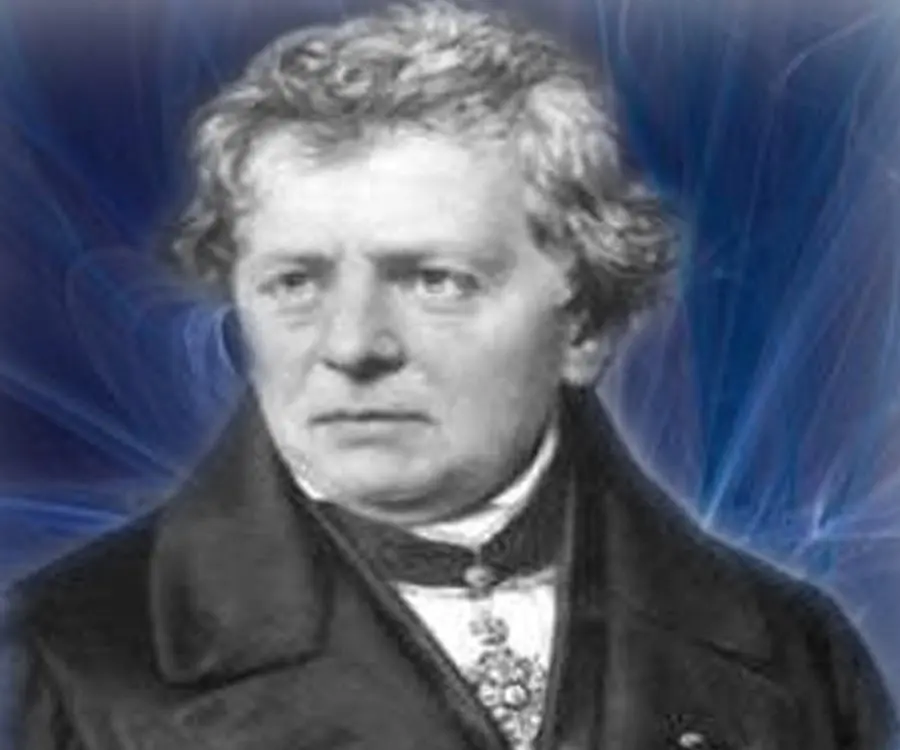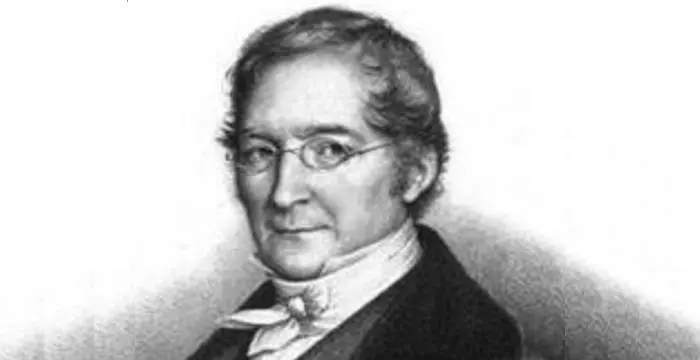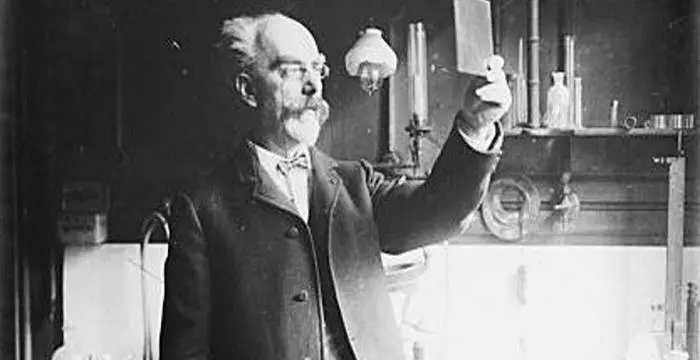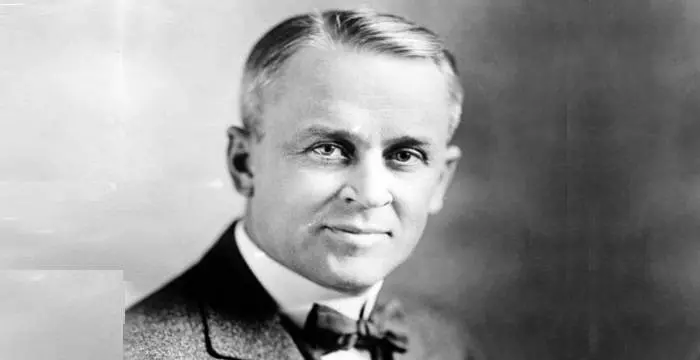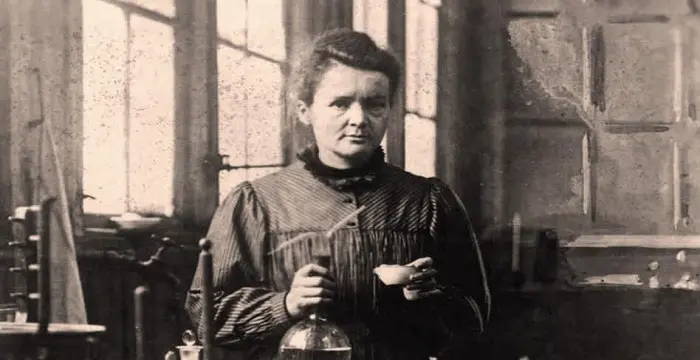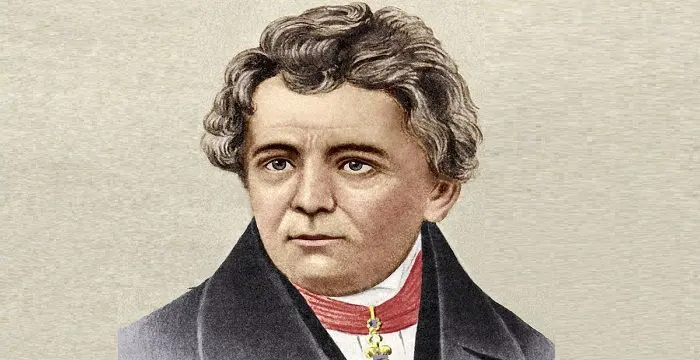
Georg Ohm - Mathematicians, Timeline and Facts
Georg Ohm's Personal Details
George Ohm is founder of the concept known as Ohm’s law
| Information | Detail |
|---|---|
| Birthday | March 16, 1789 |
| Died on | July 6, 1854 |
| Nationality | German |
| Famous | Scientists, Mathematicians, Physicists, Mathematicians, Physicists |
| Siblings | Elizabeth Barbara, Georg Simon, Martin |
| Known as | Georg Simon Ohm |
| Universities |
|
| Birth Place | Erlangen, Brandenburg-Bayreuth |
| Gender | Male |
| Father | Johann Wolfgang Ohm |
| Mother | Maria Elizabeth Beck |
| Sun Sign | Pisces |
| Born in | Erlangen, Brandenburg-Bayreuth |
| Famous as | Physicist & Mathematician |
| Died at Age | 65 |
// Famous Mathematicians
Brahmagupta
Brahmagupta was a highly accomplished ancient Indian astronomer and mathematician. This biography of Brahmagupta provides detailed information about his childhood, life, achievements, works & timeline.
Giovanni Domenico Cassini
Giovanni Cassini was a 17th century Italian mathematician, astronomer and astrologer. This biography of Giovanni Cassini provides detailed information about his childhood, life, achievements, works & timeline.
Pythagoras
Pythagoras of Samos was a Greek mathematician and philosopher. Read on to learn more about Pythagoras’s profile, childhood, life and timeline.
Georg Ohm's photo
Who is Georg Ohm?
A German physicist and mathematician, Georg Simon Ohm is best remembered for his formulation of Ohm’s Law, which defines the relationship between electrical resistance, electric force and electric current. This was an important discovery made in the field of science as it symbolized the true beginning of electrical circuit analysis. What is interesting to note is that Ohm wasn’t the only scientist who was trying to develop this relationship. There were many other researchers, prior to Ohm, who tried to establish the relationship but failed. Ohm, with his philosophical arguments and physical reality of experiments proved his hypothesis. Just like other scientists, his idea too was rejected but Ohm was not the one to be disheartened. His strong will power backed his research which later was not only accepted but made a law in physics. To know more about this ingenious scientist, browse through the following lines.
// Famous Physicists
Walter Kohn
Nobel Laureate Walter Kohn was an Austrian-born American theoretical chemist and physicist. Check out this biography to know about his childhood, life, achievements, works & timeline.
Amedeo Avogadro
Amedeo Avogadro was an Italian scientist who formulated what is now known as Avogadro's law. This biography of Amedeo Avogadro provides detailed information about his childhood, life, achievements, works & timeline.
Gabriel Lippmann
Gabriel Lippmann was a French physicist and inventor. He was awarded the Nobel Prize in Physics in 1908. This biography of Lippmann provides detailed information about his childhood, life, research, achievements and timeline.
Biography detail
Childhood & Early Life
Coming from a family of Protestants, Georg Simon Ohm was born to Johann Wolfgang Ohm and Maria Elizabeth Beck. While his father was a locksmith, his mother was the daughter of a tailor. Though his parents did not have any formal education, this did not stop his father from educating himself. And not just educating himself, Johann even educated his children through his own teachings. Ohm had two siblings, his younger brother Martin, who later became a well-known mathematician, and his sister Elizabeth Barbara. Georg, along with his brother Martin, trained himself in mathematics, physics, chemistry and philosophy at such a high standard that his formal education seemed to be valueless and uninspiring. At the age of eleven, Georg enrolled himself in Erlangen Gymnasium, where he continued his studies, until he was fifteen. However, this phase of learning, as mentioned above, wasn’t a very motivating one, for all that the education centre stressed on was rote learning and interpretating texts. Such was both the brothers’ intelligence quotient that Karl Christian von Langsdorf, professor at the University of Erlangen, compared the two to the Bernoulli family.
In 1805, Georg Ohm enrolled in the University of Erlangen. However, instead of concentrating on his studies, Ohm dribbled away his time on extracurricular activities. Johann, upon seeing that his son was wasting his valuable years and missing out on the educational opportunity, sent Georg Ohm to Switzerland in 1806. Therein, Georg took up a post as a mathematics teacher in a school in Gottstadt bei Nydau. In 1809, Karl Christian von Langsdorf left the University of Erlangen to take up a post in the University of Heidelberg. Ohm too wanted to join him, but on the advice of Langsdorf, he read the works of Euler, Laplace and Lacroix. For the same, Ohm left his teaching post in Gottstadt bei Nydau in March 1809 to become a private tutor in Neuchâtel. During his free time, he continued his private study of mathematics. This continued for two years, after which, in the April of 1811, Ohm returned to the University of Erlangen
Career in Teaching
Georg Ohm had excelled in his private studies so much so that his own studies prepared him for his doctorate degree. Ohm received his PhD degree from the University of Erlangen on October 25, 1811. Immediately thereafter, he joined the department of mathematics as a lecturer. However, this did not continue for long as Ohm left his position three months later due to less growth opportunity. Since Ohm was poverty stricken, the meagre salary that he received from the university did not do much to uplift him from his pitiable state. Next, Ohm took up the job as a teacher of mathematics and physics in Bamberg offered to him by the Bavarian government in 1813. However, unsatisfied with this too, Georg began writing an elementary textbook on geometry as a way to give vent to his abilities. In 1816, the school in which Ohm was teaching was shut down and Ohm was posted to another overcrowded school in Bamberg as a teacher of mathematics.
The following year, in September 1817, Ohm was offered a position of a teacher in mathematics and physics at the Jesuit Gymnasium of Cologne. The opportunity was an excellent one, as not only was the school better off than any other in which Ohm had taught, it also had a well-equipped laboratory. During his years as a teacher, Ohm, however, did not give up on his private studies and continued reading texts of the learned French mathematics, Lagrange, Legendre, Laplace, Biot and Poisson. Later, Ohm read the works of Fourier and Fresnel as well. Simultaneously, Ohm started his own experimental work in the school physics laboratory, after he learnt about Oersted's discovery of electromagnetism in 1820. These experiments that Ohm undertook were only as a measure to uplift his educational standard. Also, Ohm realised that if he wanted to attain a job that really inspired him, he had to work on research publications, for that was the only way he could prove himself to the world and have something solid on which he could petition for a position in a more stimulating environment.
His Research
Ohm submitted a paper in the year 1825, which dealt with the decrease in the electromagnetic force produced by a wire as the length of the wire increased. The paper was purely based on the experimental evidence that Ohm had charted from his tests and trials. Later the next year, Ohm presented two more papers in which he presented a mathematical description of conduction in circuits based on Fourier's study of heat conduction. The second paper was particularly an important one for in it, Ohm proposed laws which explained results of others working on galvanic electricity. It is also deemed to be a significant paper as it was the stepping stone for what we today know as Ohm’s law that came in the book published the following year. In 1827, Ohm published his famous book, Die galvanische Kette, mathematisch bearbeitet, wherein he gave a detailed explanation on the theory of electricity. What is interesting to note in the book is that Ohm, instead of jumping directly onto the subject, gave a mathematical background necessary for an understanding of the rest of the work. This was essential, for even the most learned and educated German physicist, required such an introduction as the approach to physics in the book was a non-mathematical one, a phenomenon unheard of in those days. According to Ohm’s theory, communication of electricity occurred between “contiguous particles”. In addition to this, the paper also illustrated the difference in the scientific approach of Ohm from that of Fourier and Navier.
Later Years
Ohm, who was given a year off by the Jesuit Gymnasium of Cologne at half pay, to concentrate his research in 1826, had to resume work in the September of 1827. During his year off that he spent in Berlin, Ohm all through believed that his publication would definitely earn him a better position at some reputed university, but the same did not happen and Ohm, reluctantly, resumed his post at Jesuit Gymnasium of Cologne. What was even worse was the fact that despite Ohm’s work was strongly an influential one, it was received with almost no enthusiasm. Deeply hurt by this, he decided to shift base to Berlin. As a result, Ohm formally resigned his position in March 1828, and took up a temporary work teaching mathematics in schools in Berlin. In 1833, Ohm accepted the position of a professor at the Nuremburg. Though this gave him the title that he so much desired for all his life, he was still not satisfied. Ohm’s hard work and peseverance was finally realised in 1842, when he received the Copley Medal award by the Royal Society. The following year, he was appointed as the foreign member of the Royal Society. In 1845, Ohm became a full member of the Bavarian Academy. Four years later, he took up a post in Munich as a curator of the Bavarian Academy’s physics cabinet and gave lectures in the University of Munich. It was only in 1852 that Ohm was designated for the chair of physics at the University of Munich, a position that he had been craving and striving for all through his life.
Death & Legacy
Georg Ohm breathed his last in Munich in the year 1854. He was interred in the Alter Südfriedhof. Not much is known about what caused the death of Georg Ohm. His name has been used in the terminology of electrical science in Ohm’s Law. Additionally, the SI unit of resistance, the ohm (symbol Ω) also adopts the name of this ace physicist.
// Famous Scientists
Juliane Koepcke
Juliane Koepcke is a German-Peruvian biologist, who was the lone survivor among the 92 passengers and crew of the ill-fated LANSA Flight 508 that crashed in the Peruvian rainforest on 24 December 1971. Know more about her life in this biography.
Henry Cavendish
Henry Cavendish was a theoretical chemist and physicist, renowned for discovery of hydrogen and calculation of the mass of earth. To know more about his childhood, profile, timeline and career read on
Konstantin Tsiolkovsky
Konstantin Tsiolkovsky was a Russian rocket scientist and a pioneer of astronautics. This biography provides detailed information about his childhood, family, personal life, career, achievements, etc.
Georg Ohm's awards
| Year | Name | Award |
|---|---|---|
Other | ||
| 0 | 1841 - Copley Medal | |
// Famous Physicists
Henry Cavendish
Henry Cavendish was a theoretical chemist and physicist, renowned for discovery of hydrogen and calculation of the mass of earth. To know more about his childhood, profile, timeline and career read on
Walter Kohn
Nobel Laureate Walter Kohn was an Austrian-born American theoretical chemist and physicist. Check out this biography to know about his childhood, life, achievements, works & timeline.
Nikola Tesla
Nikola Tesla was a Serbian-American inventor, best known for his development of alternating current electrical systems. This biography of Nikola Tesla provides detailed information about his childhood, life, achievements, works & timeline.
Robert Andrews Millikan
Robert Andrews Millikan was an eminent American experimental physicist who won the Nobel Prize for Physics in 1923 for his work on photoelectric effect. Check out this biography to know about his childhood, life, achievements, works & timeline.
Isaac Newton
Isaac Newton was an English scientist and mathematician, who discovered gravitation and Newtonian Mechanics. Read this biography to find more on his life.
Marie Curie
Marie Curie was a Physicist and Chemist, who was world renowned for her work on radioactivity. She also was the winner of two Nobel Prize. Read this biography to get info about her life and profile.
Georg Ohm's FAQ
What is Georg Ohm birthday?
Georg Ohm was born at 1789-03-16
When was Georg Ohm died?
Georg Ohm was died at 1854-07-06
Where was Georg Ohm died?
Georg Ohm was died in Munich, Kingdom of Bavaria
Which age was Georg Ohm died?
Georg Ohm was died at age 65
Where is Georg Ohm's birth place?
Georg Ohm was born in Erlangen, Brandenburg-Bayreuth
What is Georg Ohm nationalities?
Georg Ohm's nationalities is German
Who is Georg Ohm siblings?
Georg Ohm's siblings is Elizabeth Barbara, Georg Simon, Martin
What was Georg Ohm universities?
Georg Ohm studied at Friedrich-Alexander-University, Erlangen-Nuremberg
Who is Georg Ohm's father?
Georg Ohm's father is Johann Wolfgang Ohm
Who is Georg Ohm's mother?
Georg Ohm's mother is Maria Elizabeth Beck
What is Georg Ohm's sun sign?
Georg Ohm is Pisces
How famous is Georg Ohm?
Georg Ohm is famouse as Physicist & Mathematician

